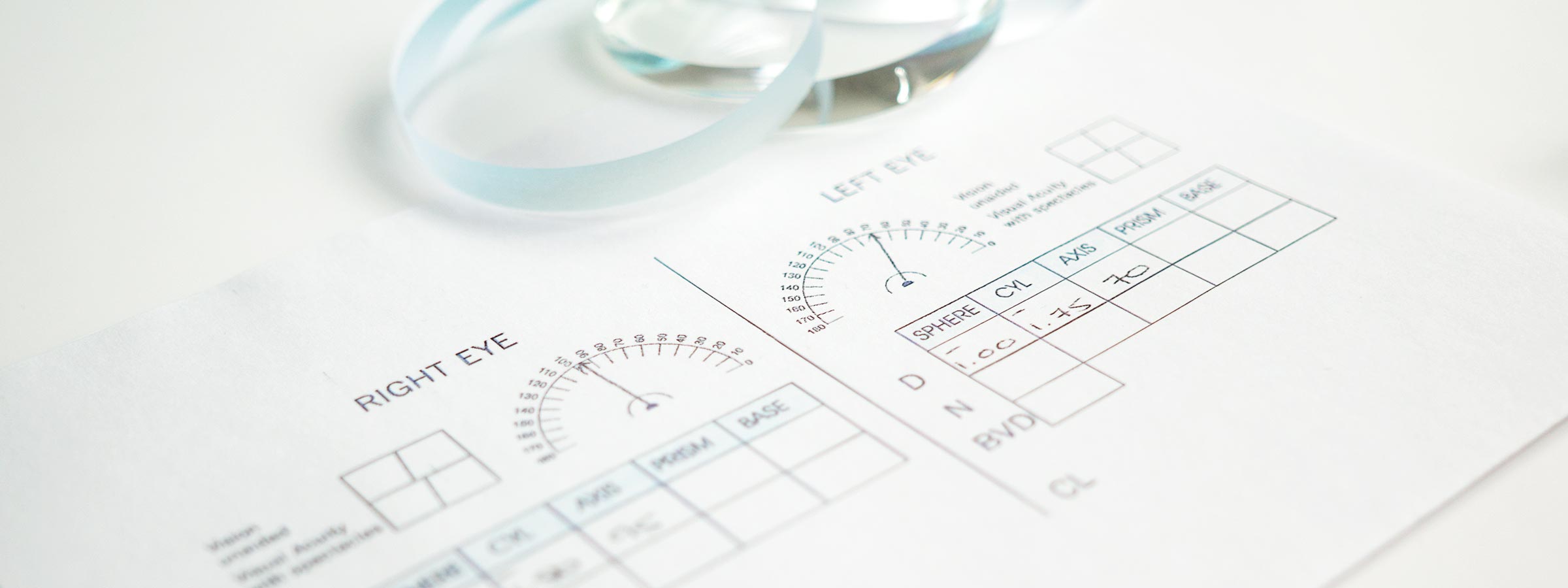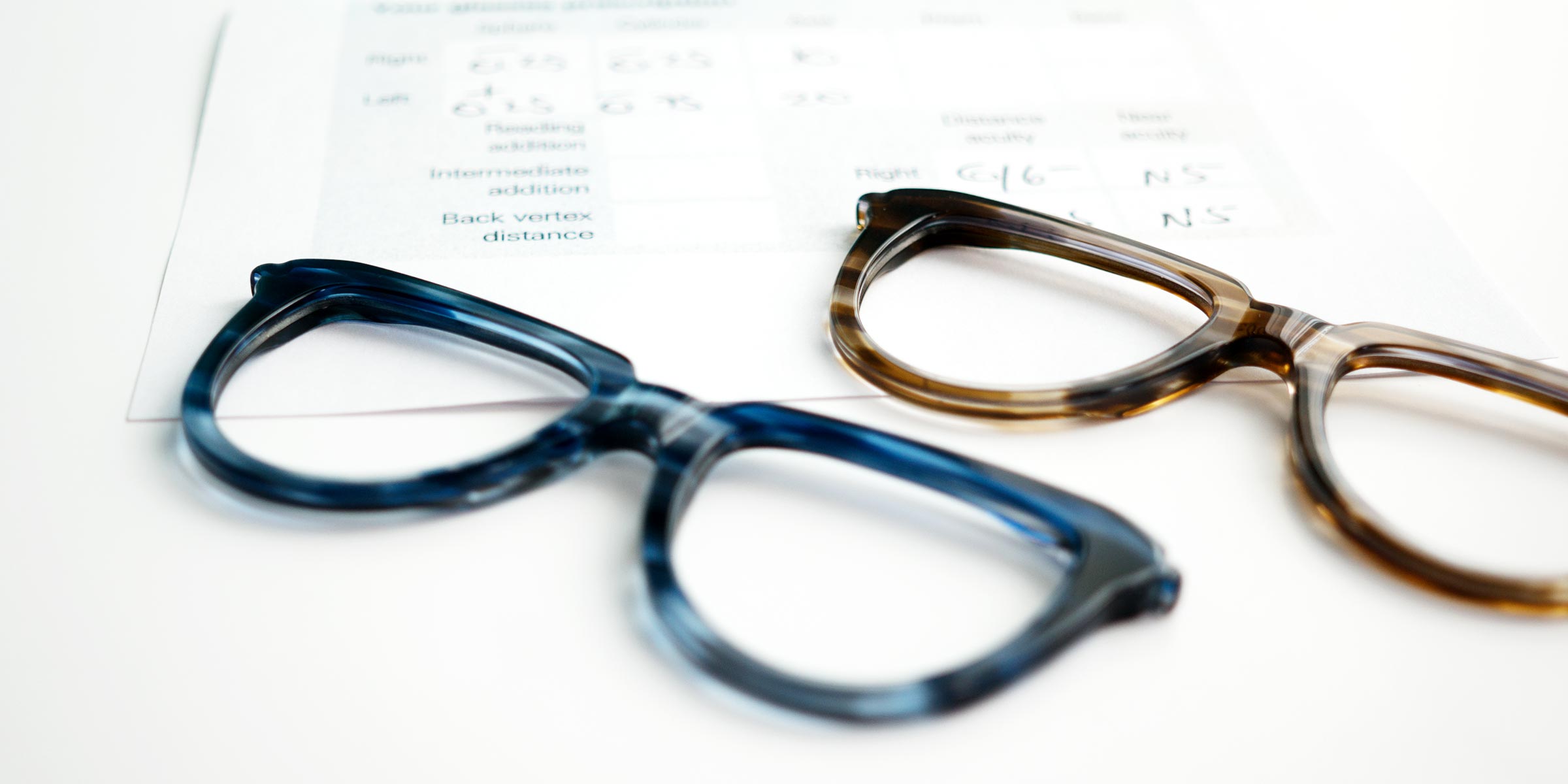Everything you need to know about the Prescription you get after your eye test

So you’ve just had an eye test and you’ve been given a slip of paper with different symbols, letters and numbers on it. If your eye test is older than two years you will be required to get a new one before being able to buy glasses online or in store.
In this article, we’ll explain why you need a prescription, why they’re important, what all the numbers and symbols mean, and the different kinds of prescriptions that you can have.
What is a prescription? / Where do you get it from?
A prescription is an important written document given by a qualified optometrist or suitably qualified medical practitioner, outlining a specific treatment. In the case of eyes, a prescription is given out by an optometrist or ophthalmologist and shows the health of the eye and recommends the strength of the lens you need in order to see clearly. It’s important to note that by law you should always receive a copy of your prescription. If you are not given a prescription, you should always ask for it.
Why do you need one? / Why are they important?
Prescriptions are important because they help determine the strength of your lenses, which lenses will work best for your eyes and to some extent what frames you can wear. For example a very high short-sighted prescription would not suit a semi-rimless or metal frame as the lens required could stick out significantly.

Can I use my glasses prescription for contact lenses?
Prescriptions for glasses are different to those for contact lenses and vice versa. This is because contact lenses sit directly on the eyeball, whereas glasses rest about one centimetre away from your eyes. A contact lenses prescription will include extra information such as: base curve, diameter, lens brand or material, and expiration date. Additionally, whereas you can go about two years between glasses prescriptions, you need a new contact lens prescription at least every year.
Single Vision Prescriptions vs. Multifocal Prescriptions
In the same way that prescriptions for glasses and contact lenses are different, so are prescriptions for single vision and multifocal prescriptions. Multifocal prescriptions are made up of two or more prescriptions (one for distance and one for reading), so you can expect your prescription to look different.
Your Prescription Explained
Ever wondered what all the symbols and numbers on your prescription mean? Our opticians explain everything, so the next time you receive yours, you’ll understand what each section means for your eyes.

+ shows if you are long-sighted (longsightedness), – shows if you are short-sighted (shortsightedness)

PD – Pupillary distance is the distance between your eyes measured between your pupil centre points

SPH – Spherical number shows whether you are short- or long-sighted

CYL – Cylinder number shows how much astigmatism you have

AXIS – Axis shows the position of the cylinder and will be between 1 and 180

PRISM – This shows if you have a muscle imbalance in your eye. We can provide lenses with a prism correction, to discuss this please contact us.

BASE – This shows the direction of the prism in your lens

ADD (sometimes written as NV) – This is applied to bifocal and varifocal lenses to correct presbyopia. It can also be written as near addition.
Knowing these terms means it’ll be easier for you to talk about your prescription with our opticians when ordering your glasses online.
How do I submit my prescription on Glasses Direct?
After following steps to select your lenses and package, you’ll be given three options for sharing your prescription with us: "send prescription later", "enter new prescription", or "use saved prescription". If you’ve shopped with us before and your prescription is up to date (more on that in a second), then select "use saved prescription".
If you’re new to Glasses Direct (or have a new prescription) and have your prescription on hand, then select "enter new prescription". If you’re in need of a new prescription, select "send prescription later". This option allows you to send your prescription via photo, email, phone or post after you’ve placed your order.
Before submitting your prescription to us, you must make sure it is up to date and was given to you within the last two years. Experts advise having your eyes tested at least once every two years. Prescription older than that? Make sure you get your eyes tested soon. If you’re in need of an eye test, check out our eye test deals page where we share discounts we’ve found online.
